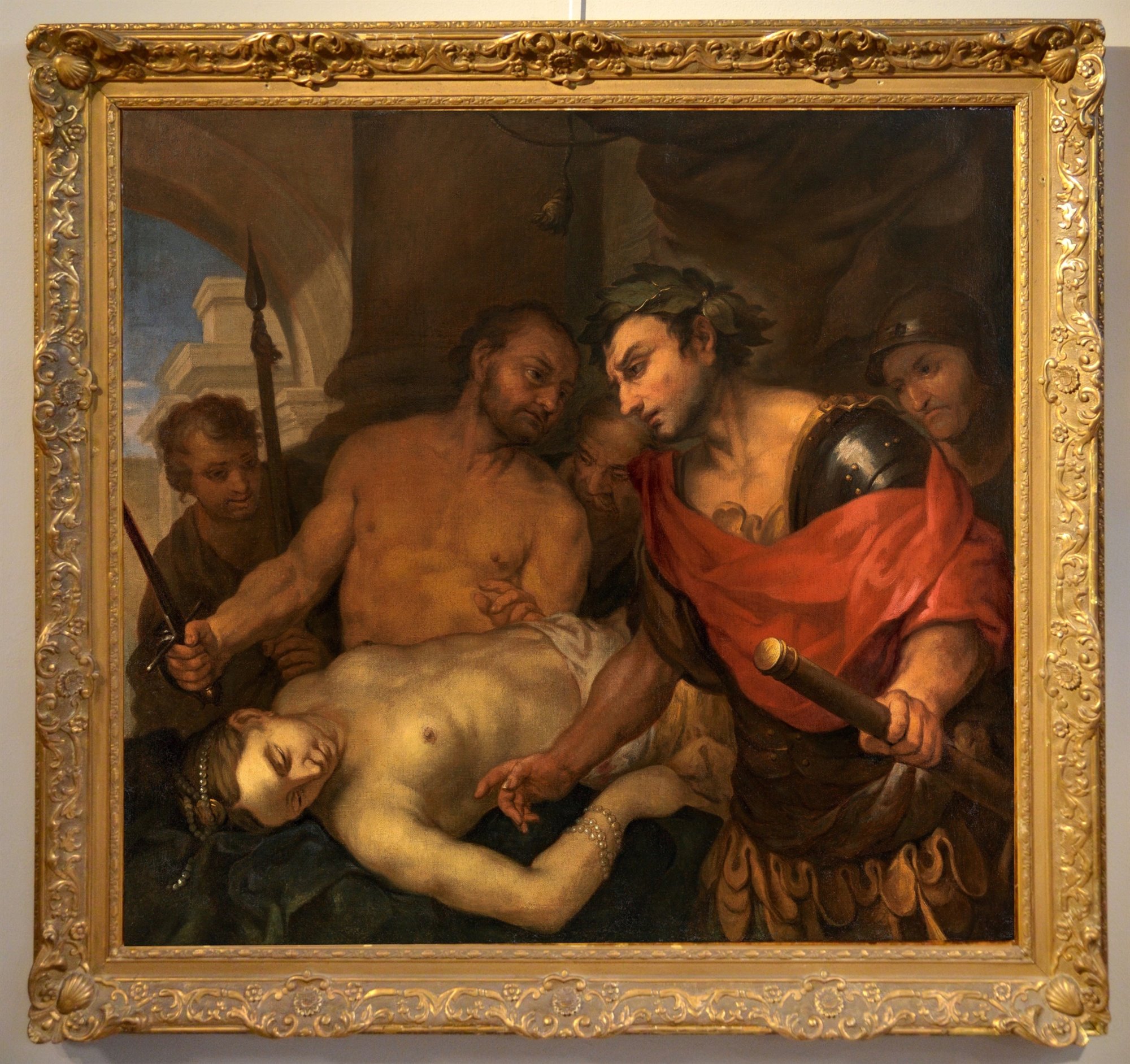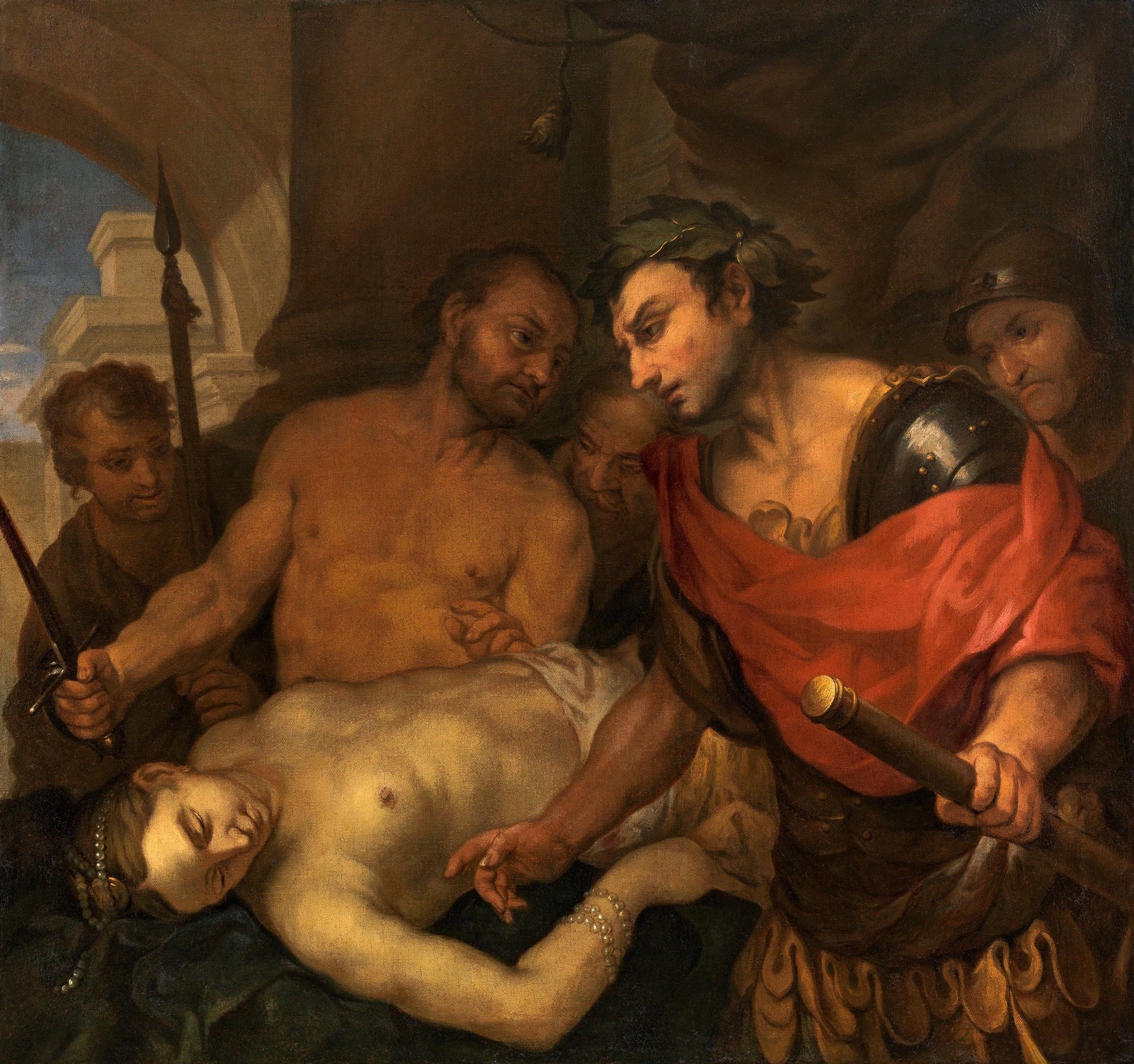ANTONIO MOLINARI (Venezia, 1655-1704)
L'Imperatore Nerone davanti al corpo di Agrippina
ANTONIO MOLINARI
(Venice, 1655-1704)
(Venice, 1655-1704)
The Emperor Nero in front of the body of Agrippina
Oil on canvas, 117.5 x 125 cm.
in frame 135 x 145 cm.
The work is accompanied by expertise drawn up by Professor Bernard Aikema (Venice)
The subject depicted in our superb work is told, with great narrative intensity, by Tacitus in his Annals (Cornelio Tacito, Annales XIV, 8) and illustrates the culminating moment of the dramatic death of Agrippina, one of the most significant and charismatic female figures of Roman Empire, hatched by his son Nero.
The scene, set in a villa on Lake Lucrino where Agrippina had taken refuge, sees the now lifeless woman, flanked by the emperor Nero, while astonished he observes her mother's body with her assassins.
It is a typical and significant work by ANTONIO MOLINARI (Venice, 1655-1704), one of the most authoritative representatives of Venetian painting at the turn of the seventeenth and eighteenth centuries, who here showed off his excellent pictorial ability.
It is a refined example of the artist's talent for room paintings who, with a grandiose composition of moral intent, stages an episode where the actors emerge for the sumptuous theatrical poses, rich in details and characterized by vibrant colors, shapes wide and a soft and sensual brushstroke.
Pupil of Antonio Zanchi, the artist was particularly influenced by the master's art, hence the dark taste and robust naturalism of his early works, such as 'Susanna and the Elders' and 'Tomiri's Revenge' (Staatliche Gemäldegalerie di Kassel ).
The merit of having made possible, in affinity with Sebastiano Ricci, the subsequent course of Venetian art is to be recognized. This happens during the ninth decade, observing the 'Capture of Samson' (Madrid, private collection), where the accentuated theatricality of the gestures, the clear palette and the fluidity of the brushstroke decree the full liberation from the dark culture.
And it is precisely in this temporal reference that our painting must have been executed. In these Molinari benefited from considerable success, painting room pictures depicting episodes of historical, mythological or biblical character, paintings celebrating heroines such as Portia or Sofonisba, or characters from Roman history, such as 'Antonio and Cleopatra' (Bassano del Grappa, Museo civico), and precisely 'Nero ed Agrippina', a version similar to ours kept at the Staatliche Gemäldegalerie Alte Meister in Kassel, Germany.
Link to the painting: http: //catalogo.fondazionezeri.unibo.it/scheda/opera/60526/Molinari%20Antonio%2C%20Nerone%20esamina% ...
Painted in excellent condition of preservation.
Like all our objects, the work is accompanied by a certificate of authenticity and descriptive card.
For any information, do not hesitate to contact us: info@antichitacastelbarco.it






